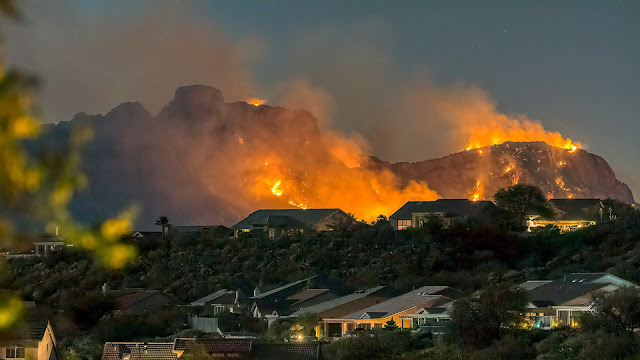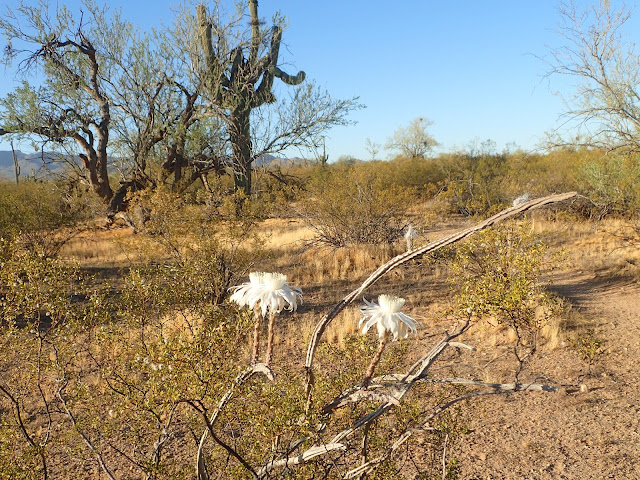The COVid19 numbers are sky-rocketing, the timeline indicating that the Memorial Day and Mothers Day weekends with dropped lock-down have more to do with it than the protest marches, but they will also soon show consequences. AZ hospitals at capacity, Better not get sick here now. I am dreading my gallery duty on the 11th of June.
 |
| Photo by Shawna Caldwell: How the fire in the catalinas started |
Not to forget that other, probably greater problems loom: Global Warming is pushed out of the news, The slowed-down world economy may provide a small reprieve. But our weather patterns are ominously confusing. We had monsoon like thunderstorms for several afternoons, nearly a month too early.
Result: fires. We can see them glowing at night and the smoke now. The second photo was taken by a friend who lives in a development that was carved into the mountains about 15 to 20 years ago, so I remember open desert there.
But some eternal (?) natural rhythms are still operating: last night was the night of the Queen. Once a year a twig-thin cactus (Peniocereus greggii) produces the most beautiful, fragrant flowers. The Mystery: within miles, they all open at once. I have not been able to relate it to moon phase, temperature, day length (the date can vary by a month) or precipitation (usually there is none before the cacti bloom) barometric pressure - nothing I can measure seems to provide the trigger, and yet, they are completely synchronized. Usually, Tohono Chul Park close to Tucson monitors and celebrates the bloom, so people are aware of the event. This year the park is closed. This morning, I found several on our dog walk. We live right in the middle of a big population. This year there were fewer flowers than usual.
Honey Bees were all over the flowers in the morning sun. These opportunistic generalists among bees are probably not suited to pollinate the big flowers. That is probably usually done by big Manduca and other Sphinx Moths. But those have been out in numbers a couple of weeks ago. I saw them at my black lights. At the moment they seem rather scarce. Perhaps I just do not see them at my lights because the moon is rather full..
 |
| Peniocereus greggii, Queen of the Night |
By the 12th of June the Big Horn Fire in the Catalinas had spread. The inferno came down the mountain towards foothills homes and 100s of people had to evacuate, others are on stand-by.
 |
| View towards the Catalinas from Tucson on June 11th 2020 |










Margarethe, so what is your guess as to how those flowers coordinate their bloom?
ReplyDeleteI really do not know. And it's not universal - further than some 10 miles from us, the date may be different. But I did notice that usually some of our more exotic garden spp like Harrisia may have one of their several blooming dates on the same day (night) as the local, native, mostly one-time per year blooming Peniocereus. The weather is - to human senses - just hot and dry when they bloom. Day-length is not the factor - the blooming date can vary by a month from year to year. Maybe an event as far as 3 months before starts the growth of the flower buds? But then why do they all open on the same date? (there are usually a few buds on big multifloral specimens that open sometimes weeks later)
Delete